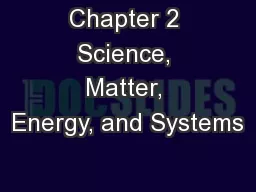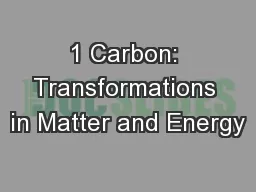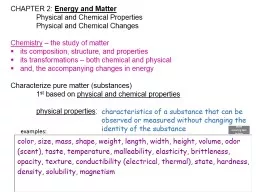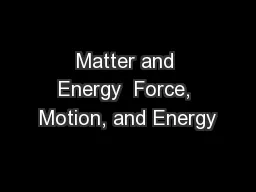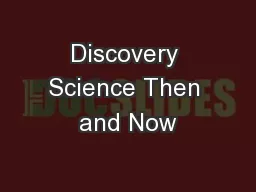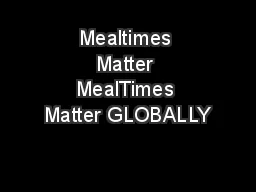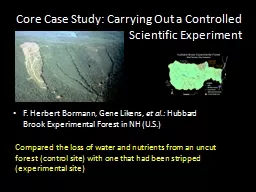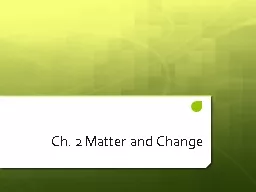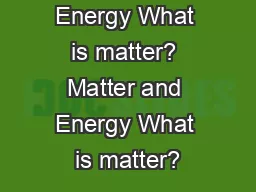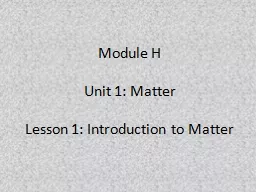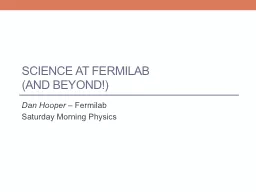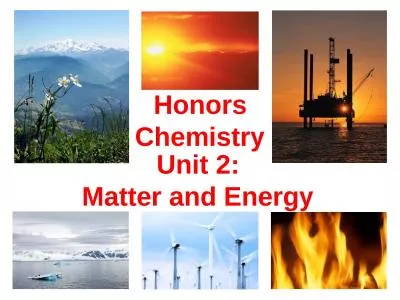PPT-Chapter 2 Science, Matter, Energy, and Systems
Author : celsa-spraggs | Published Date : 2018-11-01
Science is an endeavor to discover how nature works It has limitations and hypothesis are tentative and testable statements that must be capable of being supported
Presentation Embed Code
Download Presentation
Download Presentation The PPT/PDF document "Chapter 2 Science, Matter, Energy, and S..." is the property of its rightful owner. Permission is granted to download and print the materials on this website for personal, non-commercial use only, and to display it on your personal computer provided you do not modify the materials and that you retain all copyright notices contained in the materials. By downloading content from our website, you accept the terms of this agreement.
Chapter 2 Science, Matter, Energy, and Systems: Transcript
Download Rules Of Document
"Chapter 2 Science, Matter, Energy, and Systems"The content belongs to its owner. You may download and print it for personal use, without modification, and keep all copyright notices. By downloading, you agree to these terms.
Related Documents

